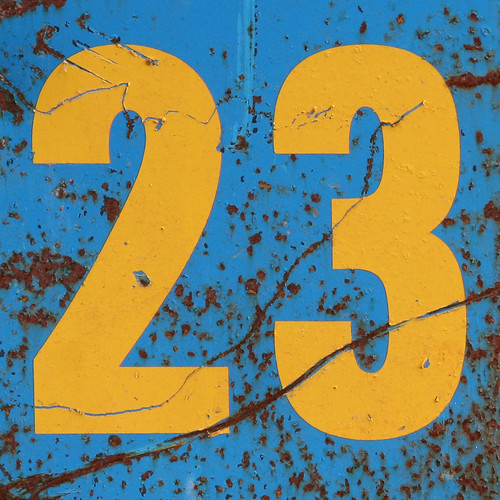
I’m running a course for our school staff at the moment called 23 Things. I borrowed the idea from the very successful 23 Things program run by the San Jose library, but have adapted it slightly for our particular school situation.
Essentially, the teachers work their way through 23 separate tasks, some as simple as reading a blog post or watching an online video tutorial, while some are a little more complicated such as setting up their own blog, feedreader and delicious accounts. The course runs over 9 weeks in total, and each week they are asked to do 3 or 4 “Things” – 23 in total – that will expose them to a wide range of Web 2.0 tools and ideas by the time it’s over.
I’m running the course internally using our school Moodle, and have set it up in such a way that people must sign up for the course and work their way through it a week at a time. I thought it sounded like a good idea, and so did they it seems… 14 teachers signed up for the course very soon after I announced it.
For all the palaver that teachers carry on with to students about the importance of time management, committment, and handing work in on time, it amazes me just how “flexible” a group of teachers expects a course to be. So far I’ve had one official drop-out, and really only 3 or 4 people who appear to be doing much at all. If this was their students that were taking such a relaxed approach to a course of study, I wonder if they would be quite so flexible and understanding.
I can’t write a note home to their parents, so instead I wrote a note to them… here’s what it said.
Some folk feel a little awkward or intimidated when they feel they don’t know how to do something… doing a course like this must feel a bit strange because you’re getting asked to do things that you have no idea how to do.
Let me remind you of something… the reason you are in this course (one can only surmise) is that you DON’T know how to do these things, but that you’d like to learn. So it’s ok not to know how to do them, or to not understand them. Applaud yourself for taking the plunge and signing up for 23 Things in an attempt to learn more about these things you don’t know.
Now, here’s a secret… if you have the Internet, you can learn to do almost anything. Try going to www.youtube.com and in the search box, type the thing you want to learn how to do… so, if you want to know how to set up Google Reader, go to YouTube and type “set up google reader“… you’ll find a bunch of tutorials to show you how. If you want to know how to make a Caesar salad, try typing in “how to make caesar salad” and viola! Dinner is almost served!
One of the unavoidable facts of life in the 21st Century is that Information is Abundant. If simple facts and data is what you need, or you want instructions on how to do something, then there is no shortage of information about it. In a previous age, school was predicated on the notion that Information is Scarce. Thanks to the Internet and tools like Google it no longer is, and this has changed the very nature of education. One of our greatest challenges in education nowadays is to deal with this idea that Information is no longer scarce… our students can (potentially) know as much (or more) than us about a particular topic. It doesn’t matter how much we know, there will always be more we don’t know.
For this reason we have to be continual learners, and we have to learn how to find answers to things that we don’t yet know. If this course was delivered face to face, I’d be able to explain and show you a lot of this stuff… but it’s not. And so you need to figure some things out for yourself and motivate yourself to find answers to problems that crop up.
By all means, I will help you if you get stuck and need a hand. But sometimes working it out for yourself can be the best thing you can do for yourself.
I have no idea whether it will make a difference or not, but I felt better after writing it.
